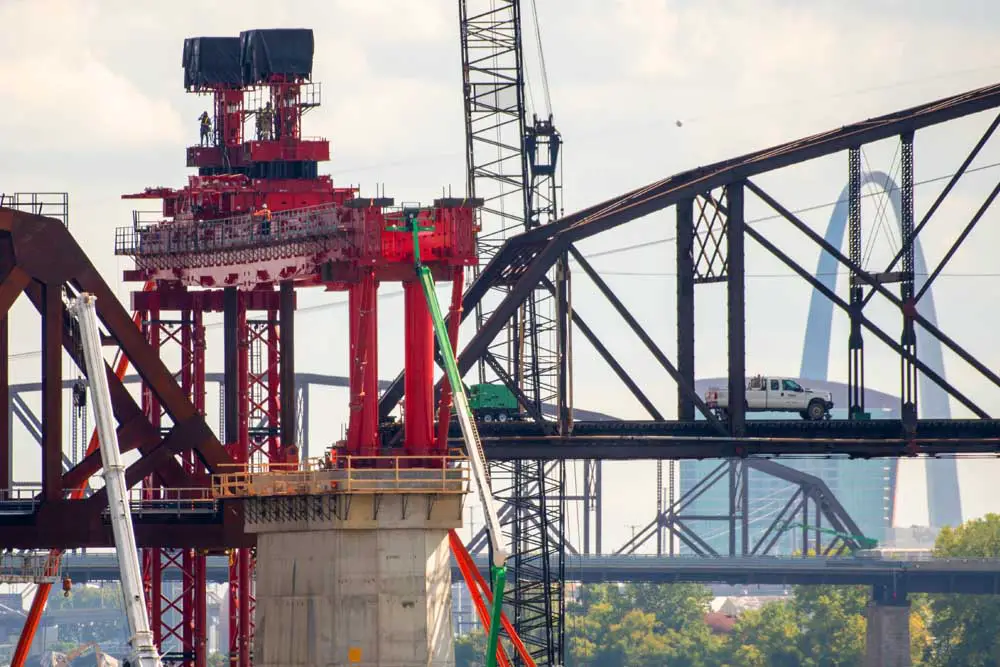The long-awaited $222 million Merchants Bridge rehabilitation project in St. Louis is finally at its last phase of construction. Since 2018, Walsh Construction has been working on the removal and replacement of three river-span trusses on the 130-year-old bridge. The first two spans have already been installed and now the contractors are preparing for the final installation.
The Missouri Department of Transportation (MoDOT) is overseeing the Merchants Bridge rehabilitation project, alongside the Bi-State Development Agency. However, the Terminal Railroad Association of St. Louis (TRRA) owns the bridge.
Reason for the Merchants Bridge rehabilitation project
The Merchants Bridge rehabilitation project is intended to make the 4,340-ft. bridge into a functional double-track bridge. The bridge was built with two tracks from the onset, but only one was operational due to weight restrictions. Due to this limitation, only a single train could cross the bridge at a time, and at a greatly reduced speed.
Also Read US$122.7 mm design-build bridge construction project awarded, Utah
TRRA’s chief engineer, Eric Fields, pointed out that the bridge needed to have the strength to carry bigger trains. He said it is expected that in the future more freight would be transported. Therefore this implies that trains would also become heavier in the future. Field said they made sure the spans attained the American Railway Engineering and Maintenance-of-Way Association standards for high-wide loads.
Each new span installation for the Merchants Bridge rehabilitation project required a10-day closure. During these periods, the trains used the MacArthur Bridge, another TRRA-owned structure. This bridge is located south of the Merchants Bridge and on the south edge of downtown St. Louis., Missouri.
Comments on the project
Mary Lamie, the executive V.P at Bi-State Development said the city was anticipating the bridge’s ribbon cutting in September. She said the Merchants Bridge rehabilitation would ensure efficient transport for local companies relying on rail traffic across the river.
Furthermore, Lamie mentioned that the bridge contracts have helped to make the bridge a little less curvy and slanty. As a result, trains would be able to approach the bridge at a higher speed. Thereby increasing efficiency and ensuring deliveries happen within hours, not days or weeks.

